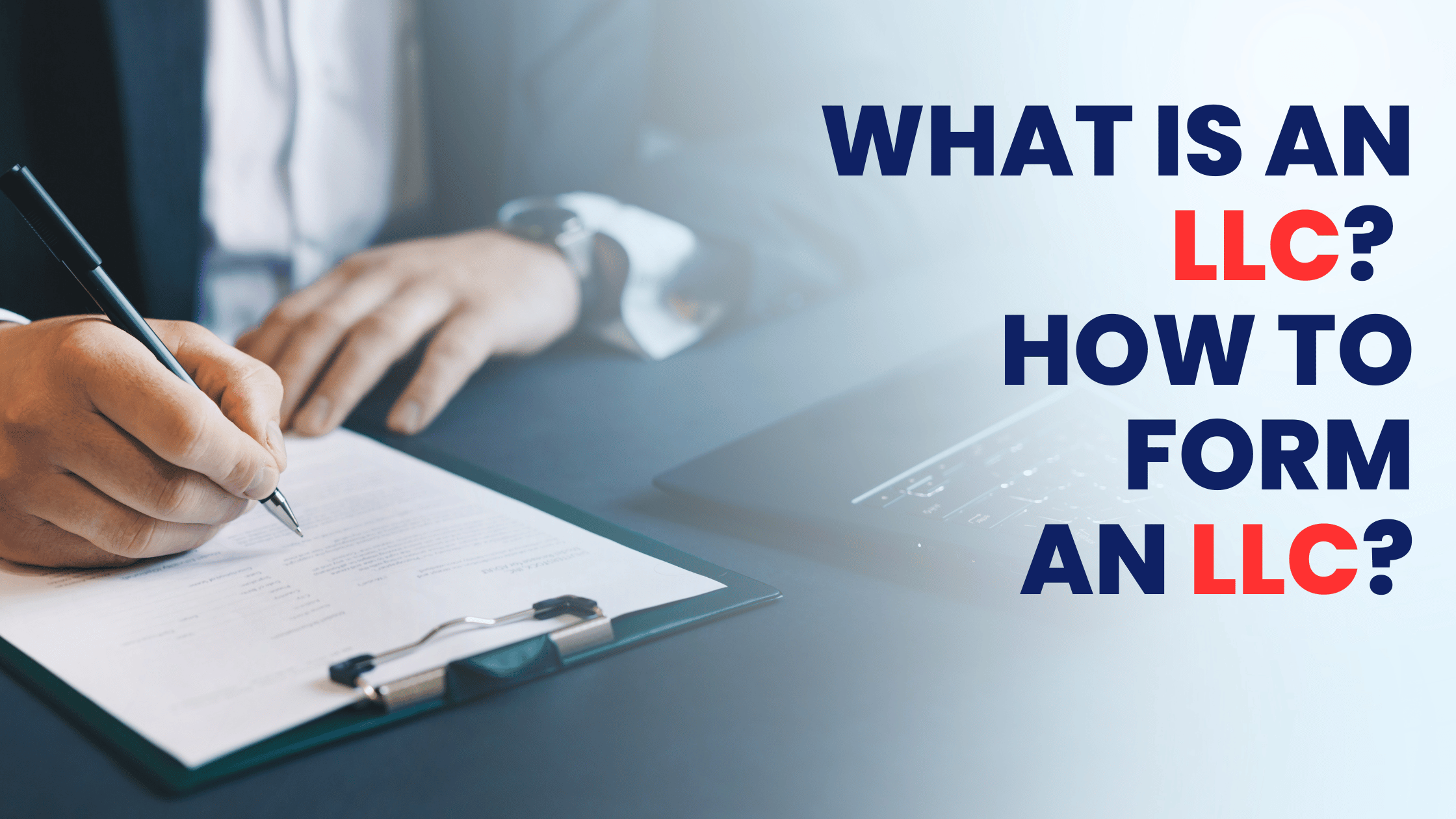What is an LLC? How to Form an LLC
- 1 What is an LLC?
- 2 Types of LLC (Limited Liability Companies)
- 3 Benefits of Forming an LLC
- 3.1 1. Limited Liability Protection
- 3.2 2. Pass-Through Taxation
- 3.3 3. Flexibility in Management
- 3.4 4. Simple Formation and Maintenance
- 3.5 5. Improved Credibility
- 4 Drawbacks of Forming an LLC
- 4.1 1. Self-Employment Taxes
- 4.2 2. Limited Life Span
- 4.3 3. State-Specific Regulations
- 4.4 4. Less Established Legal Precedent
- 4.5 5. Potential for Disagreements Among Members
- 5 How to Form an LLC?
Want to start a business but got stuck on forming an LLC for your business? Well, the small things shall never be walls on your journey. In this guide, you will know everything about LLCs and the process of forming an LLC.
What is an LLC?
LLC (Limited Liability Company) is a business structure that is a combination of elements of corporations and partnerships. The primary purpose of forming an LLC is to have limited liability protection for the members.
LLC offers the operational flexibility of partnerships or sole proprietorships. Moreover, having an LLC benefits the pass-through taxation.
Here are the lists of features of the LLC
- Limited Liability Protection
- Pass-Through Taxation
- Operational Flexibility
- Flexible Membership
- Fewer Compliance Requirements
Not to mention, LLCs can be formed in multiple ways as there are various types of LLCs as per their purpose and features.
Types of LLC (Limited Liability Companies)
1. Single-Member LLC
An individual or a single person forms a single-member LLC. Usually, a solo business owner forms a single-member LLC as it is comparatively simple to manage.
Key Features:
- Owned by a single person
- Pass-Through Taxation
- Simplified management structure
2. Multi-Member LLC
A group of people forms a multi-member LLC. This type of LLC is more complex than a single-member LLC.
Key Features:
- Owned by two or more people
- Pass-Through Taxation
- Requires an operating agreement and profit-sharing
3. Member-Managed LLC
In Member-Managed LLC, all the members of the company actively participate in the management of the business operation. However, this business structure is usually run by small businesses with fewer members.
Key Features:
- All members of the company have managerial authority
- The decisions of the company are made collectively as per the operating agreement
4. Manager-Managed LLC
This type of LLC is usually chosen when a manager decides to handle the daily business operations.
Key Features:
- Managers handle the daily business operations
- Non-managers act as passive investors
Benefits of Forming an LLC
1. Limited Liability Protection
In an LLC, members benefit from limited liability protection, which shields their assets from business debts and liabilities. This protection ensures that, in the event of a lawsuit or debt scenario, members are only liable for the amount they have invested in the LLC.
2. Pass-Through Taxation
Limited Liability Companies (LLCs) benefit from pass-through taxation, allowing profits and losses to be reported on members’ personal. This avoids the double taxation faced by C corporations, where both the company and its shareholders are taxed. Pass-through taxation often leads to more straightforward tax filing and potential cost savings for LLC members.
3. Flexibility in Management
LLCs offer management flexibility. Members can manage the LLC themselves or appoint managers. This allows for a management structure suited to the members’ needs amembers’tise.
4. Simple Formation and Maintenance
When it comes to formation, LLCs are simpler and more economical than corporations. Usually, establishing an LLC involves submitting articles of organization to the state and paying a fee. Furthermore, ongoing obligations, such as annual reports and fees, are generally less cumbersome for LLCs as opposed to corporations.
5. Improved Credibility
Establishing an LLC can boost your business’s credibility with customers, suppliers, and investors. The LLC status reflects professionalism and dedication, fostering trust and aiding in securing contracts or funding.
Drawbacks of Forming an LLC
1. Self-Employment Taxes
LLCs benefit from pass-through taxation, but members might encounter self-employment taxes on their portion of business income, which encompasses Social Security and Medicare taxes. Nevertheless, LLCs have the option to choose S corporation taxation to lessen these tax responsibilities potentially.
2. Limited Life Span
In several states, an LLC may have a finite lifespan. If not outlined in the operating agreement, the LLC might dissolve when a member passes away or withdraws. This situation can pose continuity challenges, but the operating agreement can address this by including provisions for ownership transfer and ensuring business continuity.
3. State-Specific Regulations
Understanding that LLC regulations vary by state is essential, as this can complicate the formation and compliance process when operating in multiple states. Some states, like California, have extra requirements and fees, leading to increased business costs. It’s essential to your state’s regulations to create an LLC.
4. Less Established Legal Precedent
LLCs are newer than corporations, so there’s legal precedent for resolving disputes. This can lead to uncertainty in handling legal issues, unlike corporate law, which has extensive case law for more predictability.
5. Potential for Disagreements Among Members
A carefully crafted operating agreement is essential in handling potential conflicts among members within a business. It plays a vital role in defining decision-making procedures, profit-sharing arrangements, and individual responsibilities. By clearly outlining the rights and obligations of each member, such an agreement can effectively prevent disputes and promote harmonious operations within the company.
How to Form an LLC?
Follow the steps below to form an LLC without any obligations in the process successfully.
Step 1: Choose Your LLC Name
Make sure your LLC Name is unique and does not have any presence of any existing LLC names. Also, make sure that your domain name for the LLC is available and has not been taken by others.
To make sure you have your LLC Name, you can search for the available business names on your state’s online database.
Step 2: Appoint a Registered Agent
Having a professional registered agent will make sure you have a smooth process in forming an LLC. The registered agent will process your legal documents on your behalf. Also, the agent must have a physical address of the state where you prefer to form an LLC.
Step 3: File Articles of Organization
The articles of organization are the legal document that represents your business LLC. The document holds the LLC name, address of LLC office, registered agent’s name andagent’ss, duration of the LLC, and Management structure.
Step 4: Create an Operating Agreement
Operating Agreement is the operating procedure of the LLC, which includes the member contributions and ownership percentages, voting rights and responsibilities, profit and loss distribution, and more.
Step 5: Obtain an EIN (Employer Identification Number)
An EIN number is essential for tax purposes and can be received by applying via the IRS website by filling out the online application or submitting Form SS-4 via mail.
Step 6: Open a Business Bank Account
After receiving EIN, it is time to have a business bank account for the smooth financial transaction of your business income. To open a bank account, you are required to have an EIN, Articles of Organization, and Operating Agreement.

















